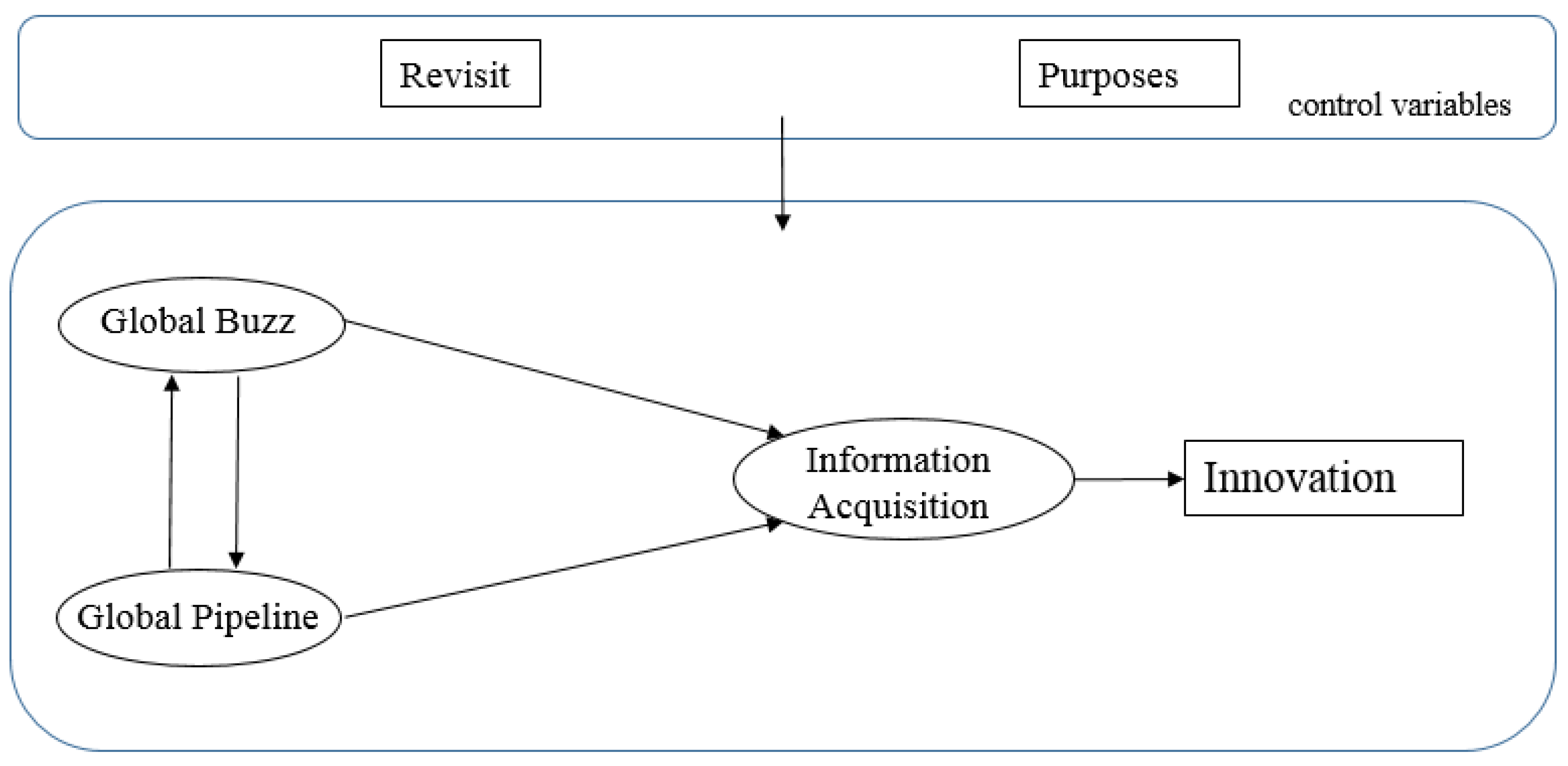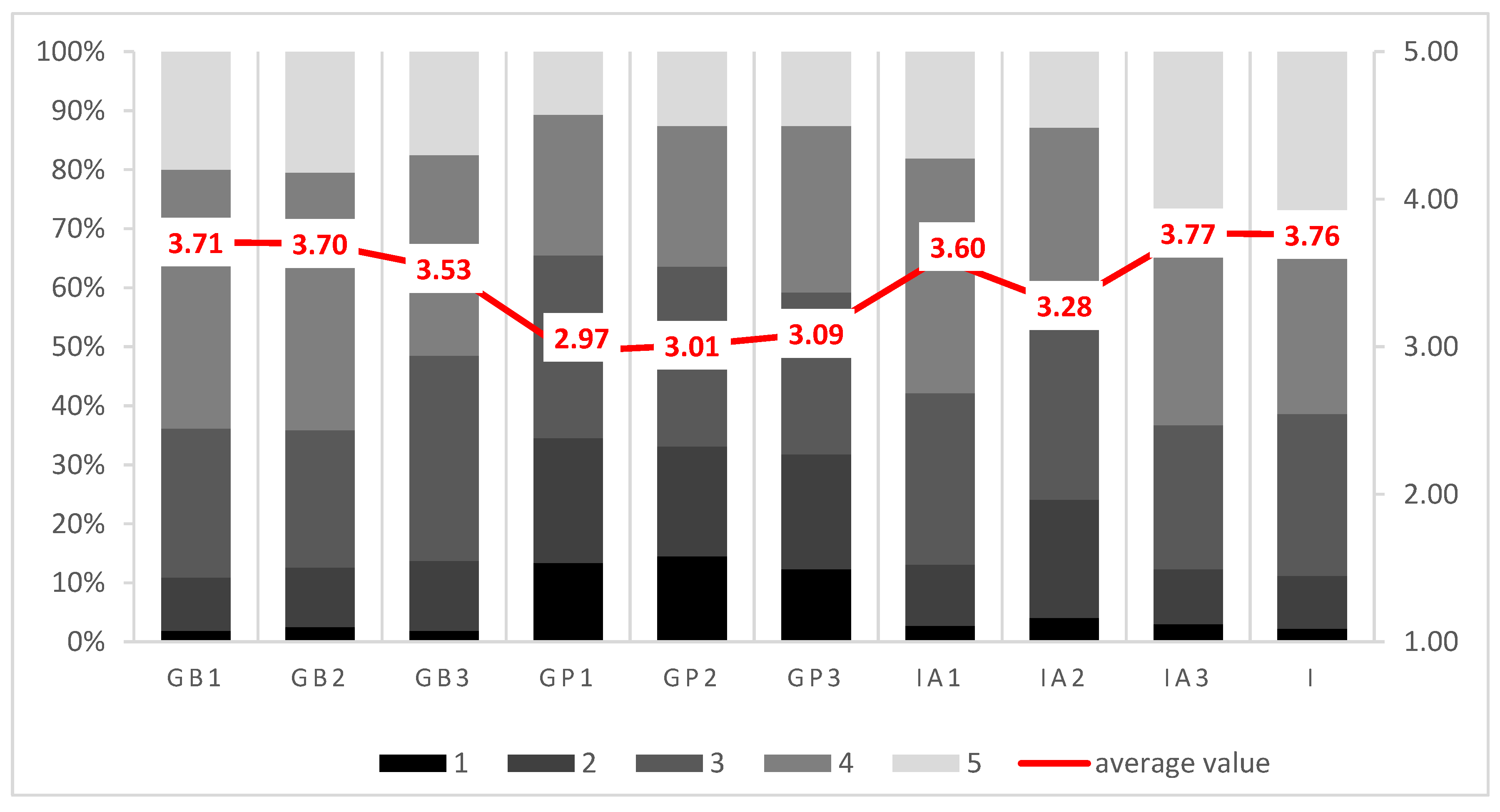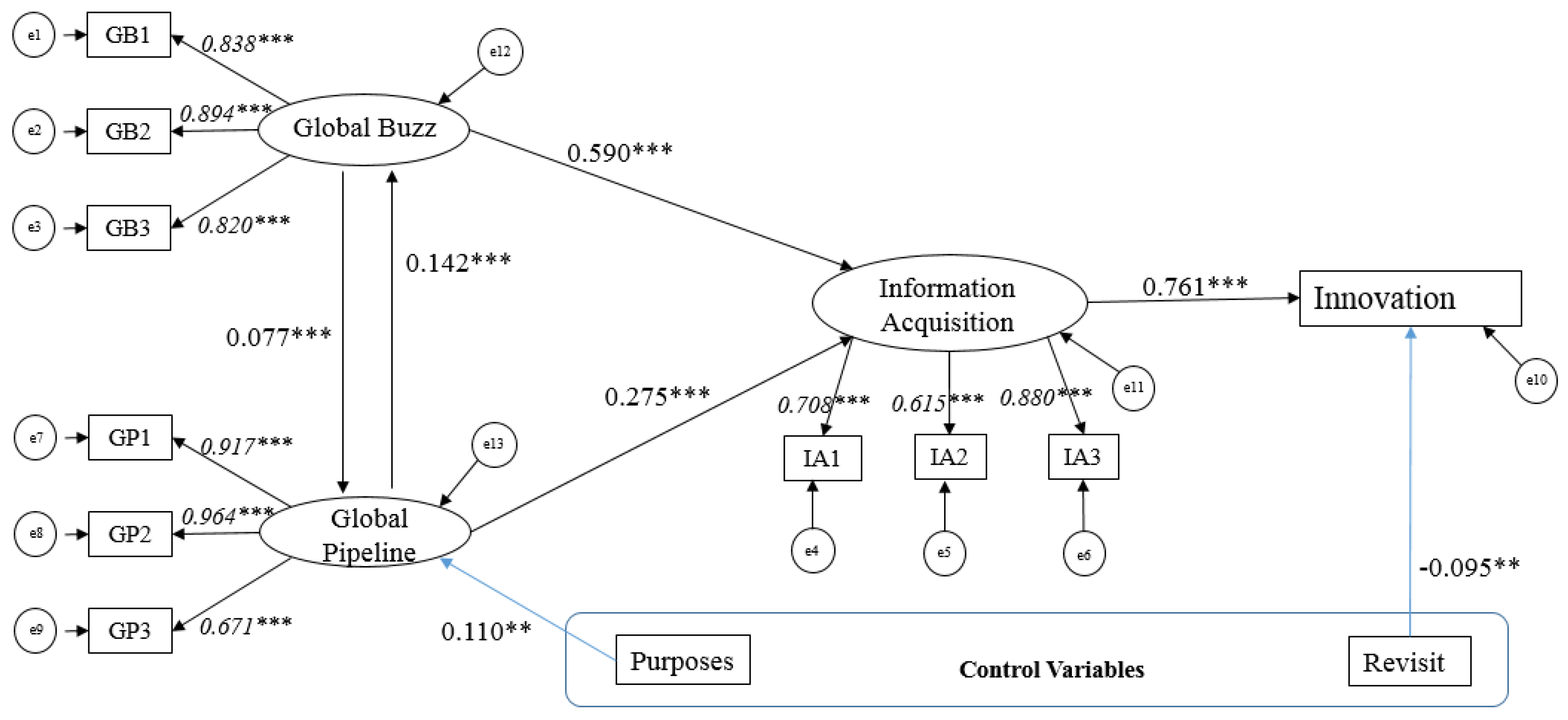1. Introduction
Nowadays, the importance of distance knowledge, as opposed to local knowledge, is being emphasized in the literature on industrial clusters [
1,
2,
3]. It is believed that without external linkages, local knowledge transferred among local firms tends to be homogeneous, and local development tends to be exposed to the risk of being ‘locked’ in the original path or the dilemma of ‘path dependence’ [
4]. Path dependence highlights the influence of specific conditions on the evolution of regional economies, such as preexisting resources, competences, skills, and experiences [
5]. Too much path dependence leads to lock-in, so it has negative consequences on economic clusters, which in turn leads to economic stagnation or even decline [
6]. Extra-regional knowledge linkages frequently support the development of new paths [
7]. Therefore, to sustain endogenous growth through innovation, it is necessary for local firms and other economic actors to build up cross-regional cooperation and seek external knowledge resources [
8].
Cross-regional interactions, which usually rely on periodic, temporary, and face-to-face communications [
2], such as ‘pipelines’ [
9], ‘listening posts’ [
10], ‘crowdsourcing’ [
11], trade fairs [
12], and other professional gatherings [
13], are becoming as important as local interactions [
2]. Recently, economic geographers have extended their academic interests to the role of exhibitions in knowledge creation and innovation [
14], and revealed the selection and mutation processes of knowledge actors in exhibition environments [
15]. Compared to local, stable interactions within specialized clusters, interactions at exhibitions can help actors to increase accessibility to new knowledge and information through the external connections provided by such temporary space-time aggregations [
12]. Maskell, Bathelt, and Malmberg (2006) [
12] refer to exhibitions as ‘temporary clusters’ in that they have similar functions to industrial clusters in achieving interactions and knowledge exchange. Actors who participate in such events are automatically exposed to ‘global buzz’ [
12], which means a specific communication and information pattern, or professional communication and information ecology, developed by participants such as exhibitors, visitors, experts, and observers participating in international exhibitions [
16,
17]. Within this ecology, market information, professional knowledge, as well as news, or gossips are circulated as a result of the temporary get-together of a diverse set of participants from all over the world. These actors build their relationships and networks [
18] through on-site observations, comparisons, and face-to-face interactions [
19], which facilitates the establishment of ‘trans-local pipelines’ or ‘global pipelines’ [
12,
19]. Meanwhile, the high cost of interactions brought by the external links and the uncertainty of distant interactions also decreases [
12]. Hence, it is fairly certain that ‘global buzz’ and ‘global pipelines’ can be generated by a temporary cluster, and they can stimulate and accelerate the processes of knowledge creation and diffusion, forming a complementary relationship with permanent clusters [
12]. In addition, periodically conducted exhibitions can be viewed as ‘cyclical clusters’ [
18]. These exhibitions and their overlapping functional spaces can continuously reproduce, reenact, and renew spaces for businesses or innovation over time.
However, extant literature has not yet refined sufficiently the dimensions of ‘global buzz’, ‘global pipelines,’ and further information acquisition in temporary clusters. Moreover, the findings that have been made have come mainly from the experiences of developed countries; very few have come from the experiences of emerging economies. As for emerging economies, such as Egypt, India, and Indonesia, exhibitions are beneficial in opening up international markets [
20], and thereby stimulating local economic growth [
21]. However, their sustainable development increasingly requires innovation capabilities [
22], while only a few scholars find burgeoning international exhibitions in emerging economies, such as China [
15]. These can also bring about knowledge generation and relationship building as is the case in developed countries. This point deserves more case studies and further investigation. Equally importantly, current discussions are overly focused on the traditional manufacturing field; only a few studies turn to creative and knowledge-intensive sectors (for example, case studies on creative festivals as creators of temporary knowledge networks [
23,
24]). Compared with manufacturing sectors, the burgeoning creative industries are supported by higher levels of skill and talent, and are more dependent on temporary coalitions of diverse and often mobile workers [
25], with a focus on individual talent creativity [
26]. Creativity has become a source of competitive advantage in such industries and people there are involved in the manipulation of ideas rather than materials [
27]. Thus, one wonders whether or not temporary creative clusters may perform better in terms of knowledge innovation rather than market expansion. Furthermore, creative industries highlight the combination of culture, art, science and technology, and commercial value rather than mere technical breakthroughs [
26]. Further, interactions with knowledge-intense institutions such as universities [
28] and high-quality consumers with highly uncertain taste [
25] are important for knowledge creation. These characteristics suggest that the global buzz and global pipelines in temporary creative clusters could be facilitated by various actors in different geographical and industrial contexts—Bathelt points out that knowledge creation and diffusion processes embedded in the exhibitions are diverse in different countries or different industries [
29]. Clearly, there is a need for more complementary studies focusing on emerging economies as well as creative and knowledge-intensive industries. To fill these gaps, this paper includes two dimensions to reveal the internal mechanisms of innovation in temporary clusters: (1) to enrich the case studies of temporary clusters and explore the interaction characteristics in different geographical and industrial contexts, and (2) to refine the relationships among ‘global buzz’, ‘global pipelines,’ and further information acquisition.
The remainder of this paper is structured as follows.
Section 2 reviews relevant literature.
Section 3 introduces the methodology, including targeting case, data collection, and modeling.
Section 4 analyzes the results, gives further explanations based on on-site interviews, and then engages in some discussion. Some conclusions are drawn in the final section.
5. Conclusions
Literature points out that as temporary clusters, exhibitions create a kind of ‘global buzz’, and provide opportunities for participants to build ‘global pipelines’ between different places, which facilitate knowledge diffusion and innovation. Much attention has been paid to the communication and information ecology of temporary clusters in the context of the developed countries and the manufacturing world. This paper, however, has focused on creative industries and knowledge-intense fields in an emerging economy. Its biggest contribution is the recommendation to further investigate in a different industrial and geographical context.
The case of the Beijing Design Week in this paper has confirmed that, as temporary creative clusters, exhibitions in creative sectors in emerging economies can be viewed as knowledge-intense events that bring about new ideas, inspirations, and further innovation. As for emerging economies, burgeoning international exhibitions can contribute to sustainable economic growth through the effects of knowledge spillover and opportunities inspiring innovation. It has been suggested that creative exhibitions should be encouraged in emerging economies to improve the conditions of interactions among different actors on the site for knowledge transfer and innovation.
The observation that relationships among global buzz, global pipelines, information acquisition, and further innovation are refined in a quantificational way can be considered as another contribution to research on temporary clusters. Global buzz functions as the gathering of various resources and activities, as well as the interactions and observations. Global pipelines act as trans-local linkages, through which specific information may be transmitted and specific relationships are likely to be built or maintained with lower cost. Global buzz and global pipelines promote each other. Both facilitate the acquisition of information and further innovation. In the case of the Beijing Design Week, innovation comes more from global buzz rather than from global pipelines. This case study has also shown that the importance of temporary clusters in information transfer and innovation may also have something to do with the organizational context, namely, the organization of such events. The potential of the global pipelines in temporary clusters could increase if organizers make organizational improvements inspiring knowledge innovation, such as breaking more internal barriers for specific inner activities, recruiting more professional volunteers, and encouraging the presence of core exhibitors.
This case study has also shown the importance of linkages among peers or friends rather than upstream and downstream relationships, as well as the cooperation and interactions with universities or other actors outside the creative industries. It has highlighted the importance of cross-sector interactions in temporary creative clusters. It has shown that various actors and institutions from other fields facilitate the global buzz and global pipelines in the Beijing Design Week, and that they jointly construct it as a cross-sector event. These cross-sector interactions have successfully demonstrated the specific ecology of creative industries in temporary clusters and confirmed Bathelt’s opinion that global buzz and global pipelines do not act in the same manner in different exhibitions, industries, and value chains.
Some inadequacies of this research need to be noted, however. Our questionnaire data were only collected during the exhibition, and formal global pipelines established after the event were not covered in this research. This leads to issues needing further investigation. Furthermore, extant research [
12,
19] has noted that the value of knowledge gained in temporary clusters gets multiplied when it gets inserted into the buzz of a permanent cluster. Meanwhile, more and more exhibitions are being held within permanent clusters. This issue deserves more academic attention, particularly with regard to the (potential) effects of temporary clusters on permanent clusters, in terms of knowledge and innovation diffusion. In addition, the roles of different agencies such as leading companies, organizers, and universities, besides exhibitors and participants deserve further investigation, to make clear the importance of the organizational context in the knowledge innovation of temporary clusters.









